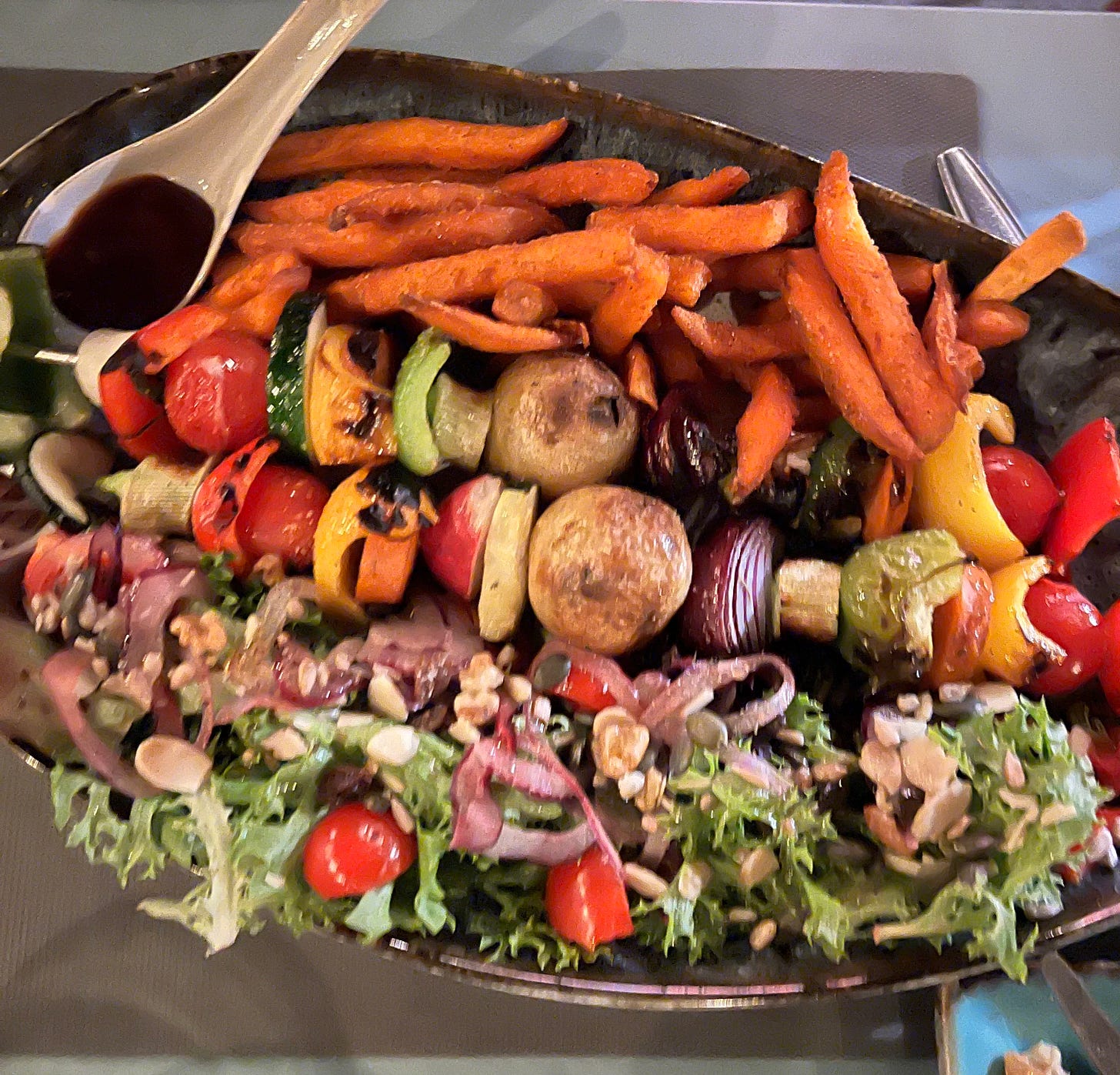Is Comfort Food Comforting?
Note: This newsletter is not meant to be political, it is for entertainment purposes. In the opening paragraph I speak of choices we have and I am aware of the current state of politics regarding freedoms in the United States and across the world and realize the privilege that goes along with the statements I make. Please read this through that lens.
Comfort Zones
At some point in our biological growth we become adults. As adults we have certain freedoms to make whatever choices are best suited to our lives. It's one of the core tenets we dreamed about growing up. When it arrives, some days we wish someone would tell us what to do. Stating what we want, being up front and taking the lead in our own lives is sometimes tiring. Allowing someone else to take the reins for a while, where we don’t have to make every decision is a welcome break. It's why going home at the holidays or for a long weekend feels (I hope) like putting on a pair of perfectly worn slippers. Keeping ourselves in the familiar spaces may feel comforting at first but when we stay too long, instead of a respite it becomes a shackle, ironically depriving us of the freedom we were originally seeking.
Comfort zones are where your limiting beliefs hang out. Think, when was the last time you felt the joy of accomplishment? It's not when you stay in your comfort zone. More likely it was you stepping outside of the norm and doing something differently and feeling the victory of your risk taking. No matter how slight it may be at the moment, it is that moment that becomes the building blocks to your next goal and from moving from fear into action.
We can apply the same principles to our eating. Our mind craves the feeling it gets from eating comfort foods, salty, fatty or sugary foods. But ask the body how it feels if it eats too much of that comfort food. After the initial dopamine hit, how do you feel? My stomach is upset and my mind is not sharp. It's sluggish.
Blood Sugar and Comfort Food
The quick absorption of glucose (sugar) is due to the high starch content. I am thinking of my favorite salty snack, french fries, deep fried, when I write here. The blood sugar at this moment spikes because the carbohydrates in the form of starches from the potatoes break down into simple sugars. We then have an insulin response to regulate our blood sugar levels. Next thing, we feel low or we are reaching for more of whatever we just ate to keep the cycle going.
The reason for this oversimplified lesson on blood sugar is in the northern hemisphere we are looking down the barrel of full fall comfort eating. As I reflect I cannot say I don’t eat comfort food. I do. When I was in my gut healing mode and on the bean protocol I was strict. I would bring my beans with me if I wanted to eat beans, I still do. But just as I would not tell someone else what to eat, I also allow for breaks in my habits when I feel up for it. As I have learned through my healing research, I most often include foods to keep my blood sugar equation balanced. And as my mother would say, “Beans on that!” She was right. Beans help with blood sugar regulation. That is not what she was saying but I will take it.
Beans are beneficial to blood sugar regulation due to their unique nutritional composition, which includes a combination of fiber, protein, and complex carbohydrates.
Most of the time I choose my healed gut over any comfort food. I have very thoughtful friends and family and they create delicious dishes that are healing, blood sugar neutral and hit the spot. I sometimes still choose salty, fatty and sugary. Its natural to want to return home to that place of comfort. What used to feel like bold steps to break free are habitual now and no longer seem bold. My palate prefers the way I eat now. When I do decide to visit a comfy old plate of nachos, I add beans along with other veggies; the toppings make all the difference between a happy or a sad GI tract. If I plan on having dessert, I make sure that my plate is filled with choices that will help to neutralize my stomach before I hit it with sugar. What do these choices look like? Take a peek at the suggestions below. No step by step recipe this week as I am eating my way through Lisbon with my family.
Last night was comforting Lebanese at Casa do Mar Sam Fim, in Azoia, after the beautiful sunset at Cabo da Roca. The spices reminded me of my Papa Charlie. It’s amazing how food can bring home a memory so quickly. Let this be your jumping off point on how you can sneak some blood sugar regulating food in without even thinking, to ward off the spikes and valleys. Enjoy.
Recommended recipe
Adding beans to your comfort food equation can be a delicious and nutritious way to help maintain stable blood sugar levels while enjoying some comforting and satisfying meals. Here are some friendly tips on how to do it:
Chili: Consider making a hearty chili with kidney beans, black beans, or pinto beans. I use Cookie and Kate’s veggie chili recipe as my jumping off point. The combination of beans and lots of flavorful spices can create a comforting and filling meal. Plus, the fiber and protein in beans will help keep your blood sugar steady.
Pasta: When making pasta dishes, try adding cooked chickpeas or white beans to your sauce. They'll blend right in and give your pasta a boost of fiber and protein. Opt for whole wheat pasta or pasta alternatives for an extra dose of complex carbohydrates.
Snack: For snacking, roasted chickpeas or edamame can be a great option. They provide a satisfying crunch and a dose of protein and fiber, helping to stave off cravings and maintain blood sugar levels. Additionally, I have a no olive oil hummus recipe from an earlier post, on July 18, for those of you who are on the bean protocol and not eating olive oil at the same time as beans.
Contact
If you have any additional questions on comfort foods and how you can incorporate beans into them, please email me at Denisemancieri1@gmail.com. Feel free to comment below if there are topics you would like to see.
Please like this newsletter by clicking the heart emoji at the top or below if you find it may assist you or others. Thank you!
Note: I am not a doctor. I am a teacher and an educator with an earned doctorate in educational leadership. I enjoy research and I can take large amounts of information and parse it out into easily understood and digestible steps so people understand what is happening to their body and possible steps to reverse it with food as medicine. I have healed my own GI issues through choices with food. I followed Karen Hurd’s bean protocol diet, I meditated and still do and I healed. I feel compelled to be in service and educate others as the more people eating beans, alongside a healthy diet and sharing their stories the more people will live a healthier existence. Joy, peace and freedom abound. Please see your doctor and discuss nutritional options before you change any course of action with your health.





